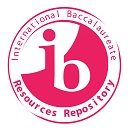Intertextualty: Introductory Activities
 Daisy Christodoulou, in her polemical 2013 book, Seven Myths about Education, takes issue with Steve Wheeler, a professor of education at the University of Plymouth in England. She challenges, in particular, this assertion that she attributes to the professor:
Daisy Christodoulou, in her polemical 2013 book, Seven Myths about Education, takes issue with Steve Wheeler, a professor of education at the University of Plymouth in England. She challenges, in particular, this assertion that she attributes to the professor:
Occasionally I hear someone saying ‘I’m glad I took Latin at school’, and then arguing that it helped them to discover the name of a fish they caught whilst out angling on holiday. Well, knowing that thalassoma bifasciatum is a blue-headed wrasse may be wonderful for one’s self-esteem. It may impress your friends during a pub quiz, but it won’t get you a job… and was it really worth all those hours learning how to conjugate amo, amas, amat simply to be able to one day identify a strange fish, when all you need to do in the digital age is Google it?
The question is, how much do children need to learn in school that is knowledge based? Do children really need to know what a phrasal verb is, or that William Shakespeare died in 1616 when what they really need be able to do is write a coherent and convincing job application or construct a relevant CV? We call this type of learning declarative knowledge, because it is ‘knowing that’ – in other words, the learning of facts… Knowing how – or procedural knowledge – will be a greater asset for most young people.
Wheeler’s contention enjoys great currency in contemporary debates about education, and one can see how this position’s popularity is reflected in, for example, the emergence and promotion of concept-based learning and Approaches to Learning (ATLs) in IB curricula. Whilst it would be silly to refute the immense importance of organizing concepts, abstract thinking, and developing transferable skills, it seems equally silly, as Christodoulou maintains, to relegate the importance of teaching knowledge and facts. Facts and ‘knowing stuff’ is not, in every instance, subordinate to understanding concepts.
In the language and literature course, this tension (if that is what it is) is made obvious in the various ways in which the concept of intertextuality is foregrounded in the course. To illustrate, both the text and genre Written Task 2 (HL) questions require students to make connections between texts. Intertextuality is a complex and contended concept. However, the notion of intertextuality presupposes, uncontentiously, that meaning does not exist (only) in a text, but rather emerges in a complex interplay between earlier texts, readers, and writers. It is in this sense that having prior knowledge is significant. This prior knowledge may be conceptual, such as recognizing how something like power or identity plays out differently in different texts. Equally, however, allusion may be something much more specific, concrete, and often intended. Thus, for example, a reader may enjoy Helen Fielding’s Bridget Jones’s Diary without knowledge of Jane Austen’s Pride and Prejudice, but the pleasure and understanding is arguably enhanced in the reader who is able to make particular, detailed connections between texts. And, whilst a reader may come to Jane Smiley’s A Thousand Acres without knowledge of Shakespeare’s King Lear, her insight into the Pulitzer Prize winning novel will certainly be enhanced if she has read the Bard’s tragedy.
Whether or not you find merit in or find important the distinction made, it remains that intertextuality, however else it is understood, is an idea that assumes understanding derived from previous knowledge, whether the knowledge is a generalized abstraction or more definite and precise.
This page provides classroom activities that introduce the concept of intertextuality to students, and reveals how intertextuality has an equally important role in both language and literature parts of the course. The activities highlight the complexity of understanding texts, and encourage students to make connections between texts and other texts, texts and the world, and texts and their own lives.
Introducing intertextuality: Watching RAF pilots with yellow trousers
Pair/Whole-class discussion: Ask students to watch the following Armstrong and Miller video clip. Do students find it funny? Why? Why not? What prior knowledge is required to understand the clip? What do students not understand, and how does this influence their response?
Teachers may choose an alternative video. However, this video is a good choice because the humour exists at a range of levels, some of which requires quite specific intertextual knowledge of English society. Understanding the humour (whether it is enjoyed or not) depends on prior knowledge.
Introducing intertextuality in literary texts
Pair/Whole-class discussion: Students read and discuss the following 2 poems (below). The first is a poem by the (famous) American poet William Carlos Williams. The second is a poem by (the arguably less well known) Scottish poet Tom Leonard. Williams’ poem was written before Leonard’s poem.
Begin by giving students Williams’ poem. This is often regarded as a canonical poem in the sense that it is considered to have considerable literary merit, and that this evaluation has been consistent over time.
Ask students to comment on the literary merit of the poem. That is, why is it so highly regarded? Note that students may be inclined to contest the positive evaluation of this poem!
Next, distribute copies of Leonard’s poem. It is written in Scottish dialect, so it may be a little tricky. Ask students to consider the (intertextual) relationship between the poems. That is, what knowledge of Williams’ poem do students need to appreciate Leonard’s poem? Which poem do they prefer? Why?
Whole-class discussion: Brainstorm intertextuality – What books, films, TV shows have students watched where an understanding of one text requires or is enhanced by an understanding of another text?
Introducing intertextuality in everyday visual texts (i): Blackwash
Show students the following photograph (also available, below, in the yellow box):

Whole-class: What does the photograph mean? Ask students to speculate on the possible meanings of the photograph. Students may be able to identify a potential play on words – whitewash/ black wash – but if they do not, don’t worry.
Once students have debated the image, provide half of the class with this information:
A whitewash is defined as a victory by the same team in every game of a series.
Provide the other half of the class with this information:
In 1984, the West Indies cricket team beat the England cricket team 5 – 0 in a series of matches.
Jigsaw the students into pairs, each with a different part of the information (above in the green boxes). What do they now think the photograph means? How is the meaning of the photograph, taken in the aftermath of a 1984 cricket match between the West Indies and England, derived from different kinds of contextual, historical, and linguistic knowledge? Understanding the photograph is now straightforward, but students should be encouraged to recognize that the text does not speak for itself; understanding requires prior knowledge.
Introducing intertextuality in everyday visual texts (ii): Signs for the public
The following task is one in ‘applied interextuality’. That is, is takes the example of an apparently benign and widely understood sign (the location of a public toilet intended for women) and shows how it may be manipulated for political purposes that challenge conventional thinking and systems of power. Put students into small groups for this activity, and give them the handout (below) using the questions prompts (included in the handout) for discussion and debate. In rounding off the discussion, ask students to return to the idea of textual knowledge being bound to previous textual knowledge. Explicitly Introduce the idea of intertextuality (if you haven't already) and, as a class, co-create a definition of the concept/term. What do we mean when we use the term intertextuality?
Links to Theory of Knowledge (TOK)
The idea of intertextuality means, in part, that knowledge of texts is bound to our knowledge of (earlier) texts. Thus, making meaning of texts is something that exists co-dependently with other texts. Given this, teachers may pose the following questions:
- Is it possible for a text to have a fixed meaning that everyone can agree on, where the meaning never changes over time?
- If it is not possible that texts can have a fixed meaning, how are agreement, cooperation, and adherence to laws possible in any given society?
- The idea of intertextuality means that texts do not have one fixed meaning (even if there is an intended meaning). The meaning of texts is, in this sense, always relational to other earlier texts. The text - any text - becomes an intertext and meaning is always, as it were, slipping out of sight. To the extent that this is the case, how do babies and young children begin to make sense of texts (including rudimentary iconographic symbols) when they are born with no previous textual/cultural knowledge?
 IB Docs (2) Team
IB Docs (2) Team